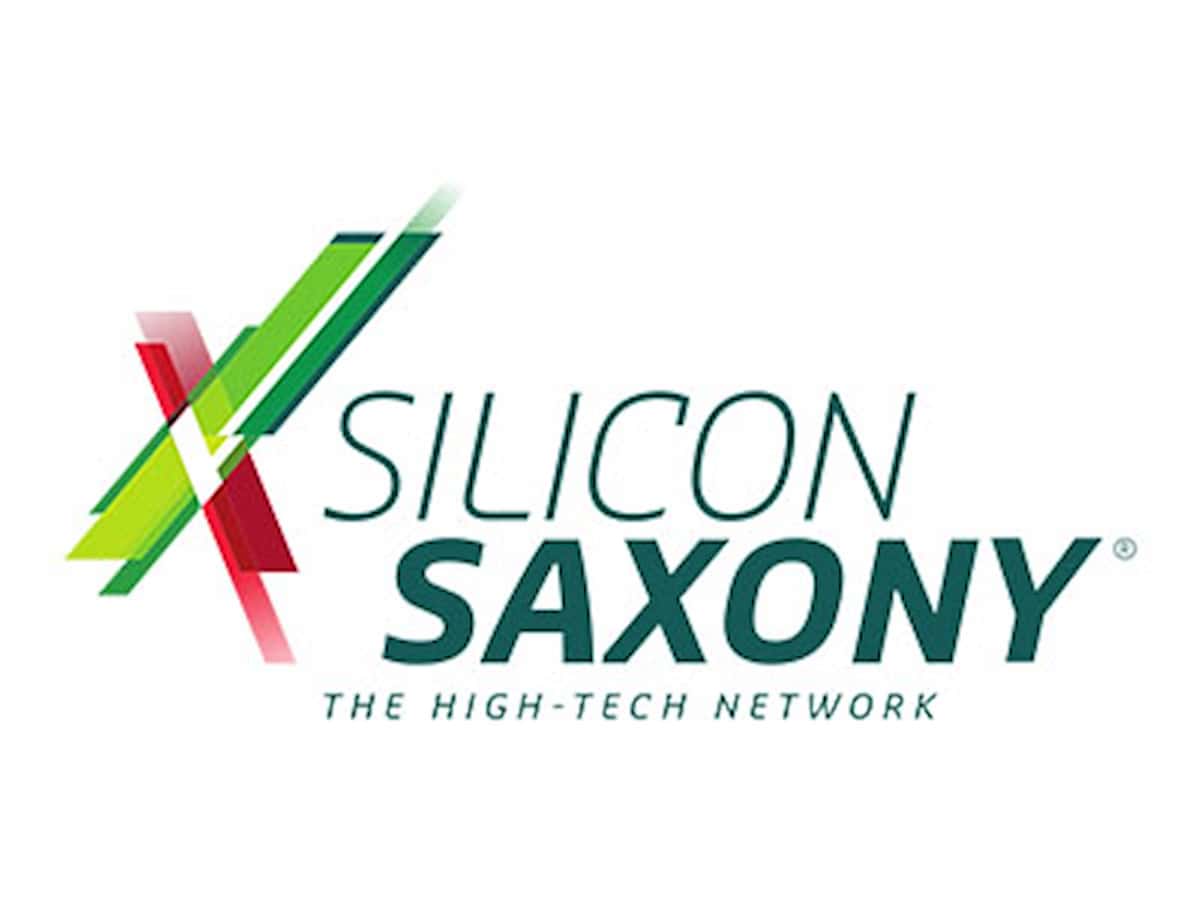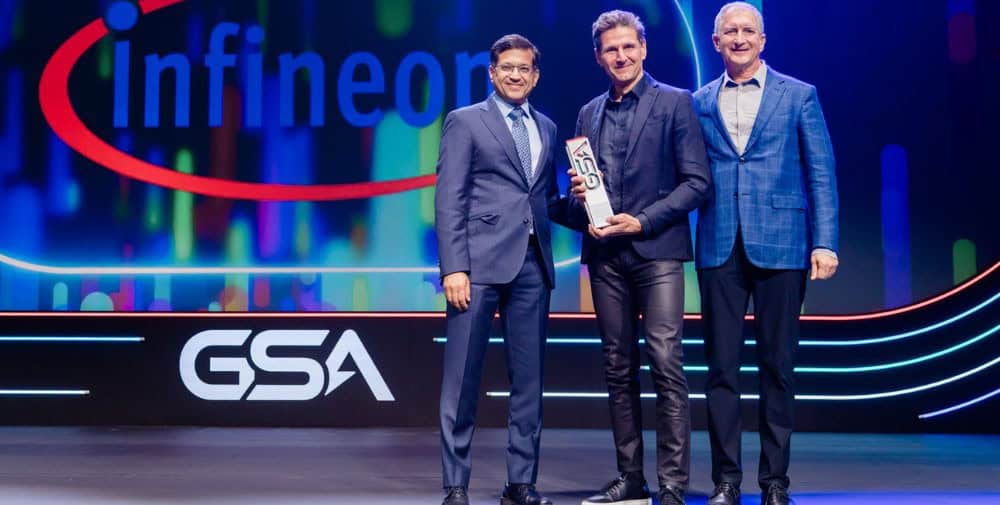
Last Tuesday, Federal Chancellor Friedrich Merz made his inaugural visit to Dresden, the state capital of Saxony, with a large entourage. There was plenty to talk about between Minister President Kretzschmer and his CDU parliamentary colleague Merz, from the state’s eventful past to its largely successful structural change and future prospects. Of course, microelectronics was also the focus of the high-ranking visit. Everyone should be aware of the importance of microelectronics since corona, but at the latest since the extraordinary drama surrounding the Dutch semiconductor company Nexperia and its impact on Germany and the local automotive industry. It is also easy to see what is currently happening in this field in Saxony – and it is not just the media that is constantly putting it in the spotlight.
Saxony’s billion-euro semiconductor projects are on track
As soon as Chancellor Merz arrived, he was greeted by the cranes of the esmc construction site in the north of Dresden on the A4 highway. Here, as at the nearby Infineon construction site (construction of a new Smart Power Fab), the location is currently showing what it can do: Implementing major projects in the semiconductor industry in record time. Both Chips Act projects are on schedule and will start production for Germany and Europe on time. The microelectronics heart of Europe beats here in Saxony. The industry is growing here like nowhere else on the continent. In the presence of the Federal Chancellor, a further and thus third billion-euro investment was celebrated in the north of Dresden, that of GlobalFoundries.
GlobalFoundries adds to the current positive news from the location
The US company, funded under European Chips Act regulations by the federal and state governments, is investing 1.1 billion euros in the expansion of its production capacities. 1.1 billion wafers (previously 950 million) per year are to be produced in Europe’s largest fab in future. New products and target groups will be addressed. An exclusively European supply chain is to make safety-relevant semiconductor products in Europe and for Europe possible. And this is probably just the beginning of further investments, if the rumors at the site are to be believed. With the planned and already implemented modernizations and expansions of the two microelectronics giants Bosch and X-FAB at the site, the Free State is impressively demonstrating its clout. There has long been talk of a “boom” region in the media. Not only are the major semiconductor players investing billions here, but their suppliers and service providers are also following suit by investing millions.
Suppliers and service providers are following suit in the wake of major investments
Adenso built a new logistics center, SEMPA Systems celebrated the opening of its new company headquarters and Ebara Precision Machinery Europe relocated its headquarters to the Saxon state capital, Fäth expanded its local site, Exyte increased its local presence, VON ARDENNE enlarged its clean room area, Air Liquide invested in a state-of-the-art industrial gas production facility for Saxony, Murata Machinery Europe settled in Dresden and the company Voxclean was founded. These are just a few examples from recent weeks and months that underline the current dynamism of the location. A total of at least 30 billion euros will be pumped into the Free State by 2030 in the microelectronics sector alone. New jobs and production capacities are being created and with them completely new requirements and needs in the region
Funding must now flow into the Free State’s infrastructure
Growth is not only a blessing, however, but can also become a curse if it is not responded to appropriately. With the redistribution of 3 billion euros in funding for microelectronics to Germany’s infrastructure expansion, one might have assumed that this realization would have reached politicians by now. Unfortunately, this amount of funding probably largely ignores the needs of the semiconductor industry and the region of Saxony. It would be advisable now at the latest to rapidly expand the infrastructure of the Free State in particular. Otherwise, transport, electricity, water and many other issues could soon become a bottleneck for the local industry and economy. Traffic jams, power outages and water shortages would be to be feared. The region would be slowed down. The bang after the boom would be the result. Just a few days ago, it was announced that ASML, the industry leader in the field of lithography systems, is currently threatened by a power shortage in Eindhoven in the Netherlands. This is slowing down the company’s planned expansion at the site. This is the first European warning shot across the bow of politics. But back to the region of Saxony.
Rail, road and air traffic are becoming a brake on the region
Dresden still has inadequate transport connections. Neither road, rail nor air traffic are geared towards the needs of the coming years and decades. For example, work has been underway for some time on the A4 highway, which dates back to the 1990s – it is actually supposed to grow to 8-6 lanes. So far, however, this crunching maintenance has caused more additional problems due to traffic jams. Relief is not planned until 2035 at the earliest. Unfortunately, Deutsche Bahn’s large freight loading center in Dresden is also on the brink of collapse. The fast new railroad line to Prague and the electrification gap closure of the line from Bautzen and Görlitz to Wroclaw are being pushed further and further back – more speed is needed here! The connection to Chemnitz and Nuremberg, once planned as an ICE tilting train line, has been forgotten. Passenger connections and the freight line to Poland have so far been largely concentrated on Leipzig. All in all, this means that rail services are bypassing Saxony’s main growth zone, the state capital Dresden, and its surrounding area.
In addition, more and more flights are being canceled at Dresden and Halle/Leipzig airports every year. Dresden in particular, with its international companies and the associated international division of labor, e.g. in the chip industry, needs air traffic. Also because there seem to be no alternatives by rail or road in the foreseeable future. Established flight connections to Stuttgart (Bosch) or to the hub in Amsterdam (NXP) urgently need to be re-established. North Rhine-Westphalia must remain accessible. New connections such as Vienna or Barcelona would be a gain.
Excessively high fees are causing airlines to migrate
New services are urgently needed, especially for rail and air traffic. The region’s roads are carrying too much weight. Even the 8-lane expansion of the A4 will not be able to solve all the problems here. Many of these issues are in the hands of the federal government. Saxony’s Minister President Kretzschmer also spoke with Federal Chancellor Merz about this, at least that is what was announced in advance. It remains to be seen what concrete results will emerge from these talks. However, the levers seem to have long been clear. The fees for airlines in Germany must be reduced as quickly as possible. Each landing costs airlines around 5000 euros in Dresden, for example. Nearby Prague charges 350 euros per landing. It is therefore not incomprehensible that airlines make decisions against regions for economic reasons, even if they are booming. The government has offered a solution here, which now needs to be implemented. Billions must also be invested in new roads and railways. All of this must converge centrally at the Dresden Airport Park. However, when and whether this will happen is currently written in the stars.
The region itself also needs to be equipped for immigration and job growth
However, Saxony also faces challenges beyond transport that need to be solved in the coming years. Dresden’s semiconductor fabs are hungry for electricity and water. The major power lines from Leipzig and Lusatia must be routed to the Saxon state capital, the long-announced river waterworks on the Elbe must be implemented and a recycling solution for wastewater must be established. The rising employment figures in the region, which are associated with an influx of people from Germany and abroad, must be reflected in housing, educational facilities and the local and long-distance transport services that have already been announced. We need to become more attractive in all areas and anticipate the developments of the coming years and decades at an early stage, plan ahead and meet them with appropriate investments. These are certainly not easy tasks to master. But together with business, industry, associations and, above all, society, solutions should be found quickly.
As beautiful as the drive of the past and coming years is, Saxony and Germany must steer it in the right direction. Nothing would be worse than steering the current boom into a dead end in which a big bang is ultimately inevitable.
Silicon Saxony podcast:
👉 To the podcast “What’s chippening”
Photo: pixabay



